Order: Psittaciformes. Family: Psittacidae
Description
22–25 cm. Dark brown, dark grey head, yellow feathers on the leading edge of the wings, and covering their upper legs. Bill grey/black. Bare cere and eye ring grey/black. Eye orange/red. They are sexually dimorphic.
Female is brighter than male, with more extensive blue feathers on the lower back and the rump.
Male birds loose this blue feather colouration as they become mature. Only dull blue suffusion on brown rump and undertail coverts.
In immatures, the yellow is dull or missing. Rump and uppertail coverts paler; lower abdomen to undertail coverts brown washed with dull blue; brown thighs and lesser wing coverts. Bill horn coloured. Cere and eye ring paler grey. Eye brown.
Similar species: It is closely related and similar to the more widespread Meyer’s Parrot, but is a distinctively darker shade of grey. At rest, male is best distinguished from Meyer's Parrot by its greyish (not brown) throat and head, red eyes, brown, not green, breast, and by its blue (not green or turquoise) belly. In flight easily differentiated from Meyer's Parrot by obvious blue, not green rump. The yellow bar across the crown of Meyer's Parrot is absent in this species.
Distribution
Near endemic to central and northern highlands of Namibia, as its distribution extends to southern Angola. From Grootfontein in the east, Waterberg Plateau and south to Rehoboth, penetrating the Namib Desert along the largest rivers such as the Hoarusib and Swakop.
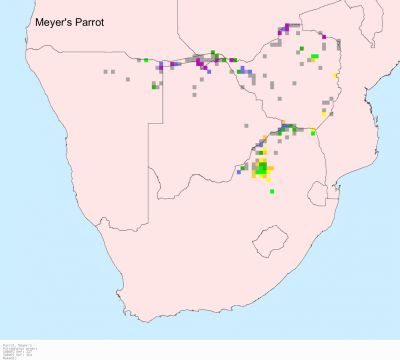
Habitat
In the northern part of its range it prefers riparian woodland and stands of Northern Lala palms (Hypheane petersiana). In central Namibia it may also occur in mixed Acacia woodland and cluster-leaf (Terminalia) stands.
Diet
Its diet varies according to time of year, eating a range of plants and occasionally insects.
Breeding
It nests in tree cavities, either natural or excavated by woodpeckers. It especially favours cavities in cluster-leafs), Acacia erioloba (Camel thorn) and Olea europea (African olive), as these trees are fairly common in some of its favoured habitats. Egg-laying season is from January-June, peaking from January-March. It lays 3 to 5 rounded eggs (27.0 x 24.0mm), which are incubated for about 24-30 days, mainly by the female. The chicks stay in the nest for about 50-51 days.
Call
Flight call a raucous shriek. Quieter and more melodious contact calls. Listen to Bird Call.
Status
Near endemic. Uncommon to locally common resident. Not threatened, however its population numbers are threatened by the cage bird trade - an estimated 600-1000 birds are exported annually to South Africa and Europe, approximately 60-70% of which die while in transit. It is a protected species, listed on CITES appendix II.



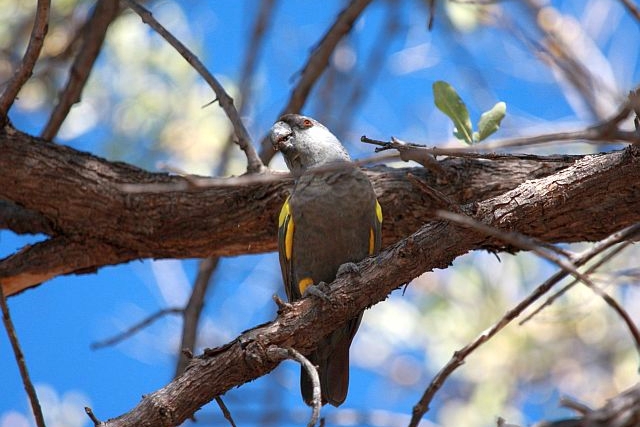
 © nan
© nan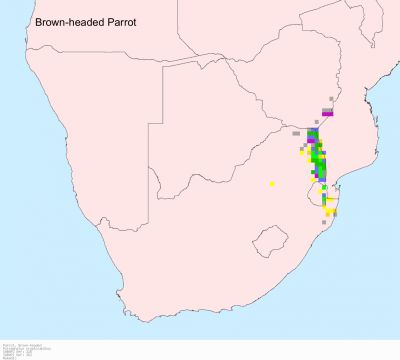
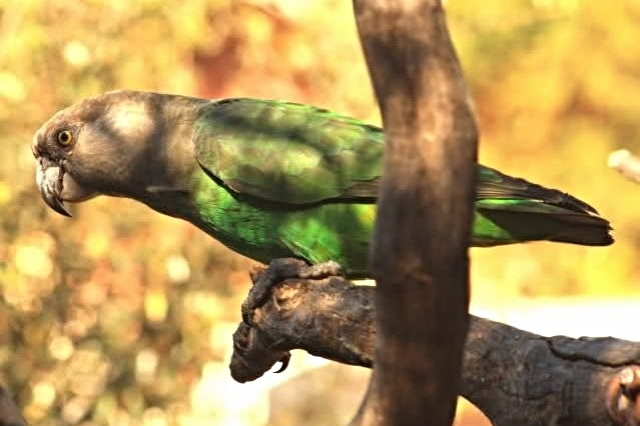 © Flutterby
© Flutterby © Flutterby
© Flutterby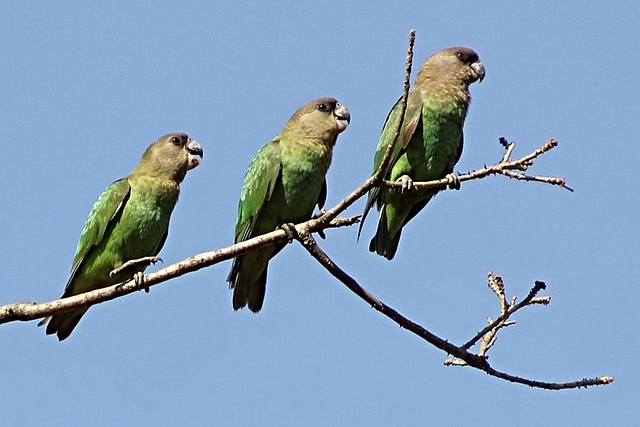 © Amoli
© Amoli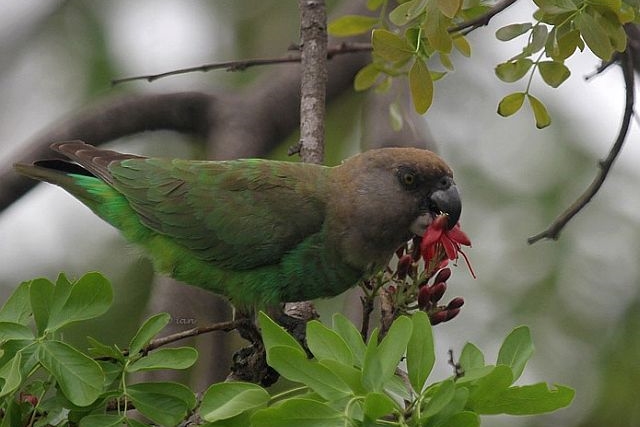 © leachy
© leachy © leachy
© leachy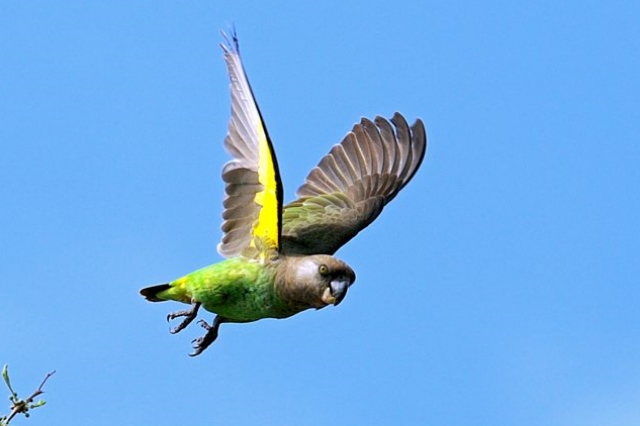 © Dewi
© Dewi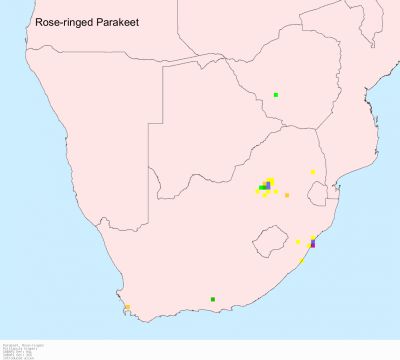
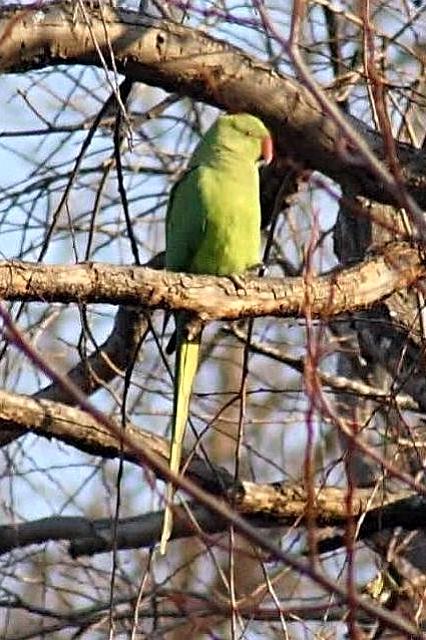 © Flutterby
© Flutterby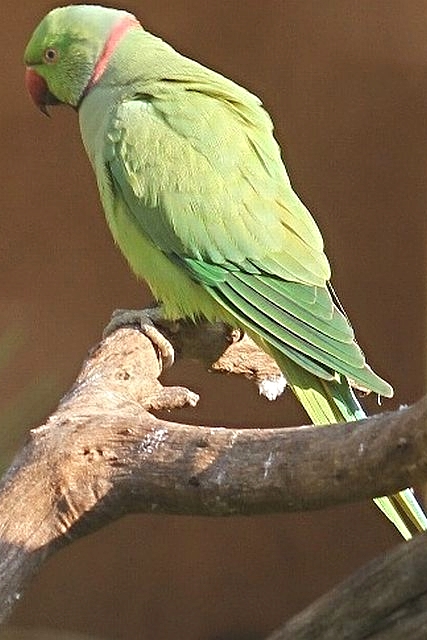 © Amoli
© Amoli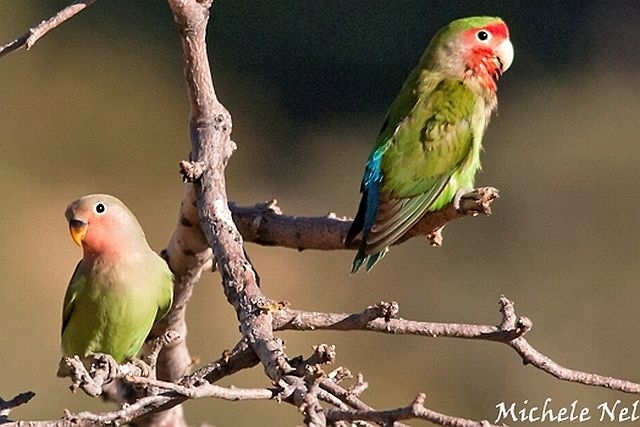 © Michele Nel
© Michele Nel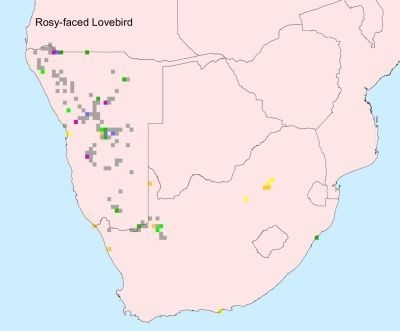
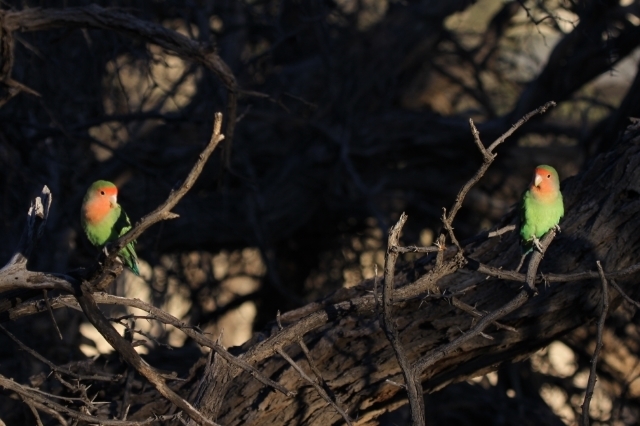 © Tina
© Tina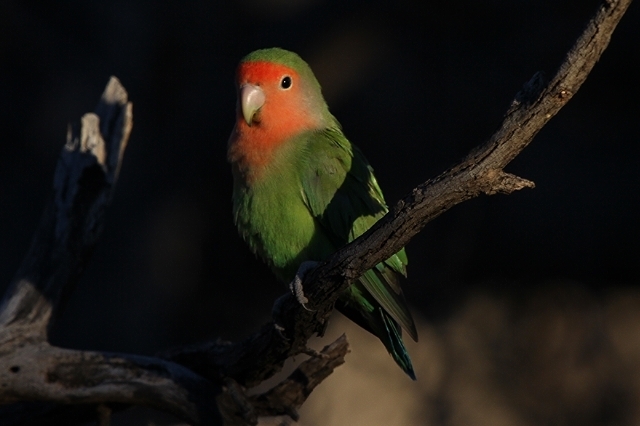 © Tina
© Tina